The swaying trees closed ranks in the darkness, obscuring my route. In theory a public footpath led through them: the next stage in my quest to walk the entire length of the River Wharfe.
I hunched over my Ordnance Survey map, trying to protect my phone’s light from the blowing rain and lamenting my lack of a headtorch. When I looked up, every sweep of my light made the slightest open area look like a footpath. So I decided to cut my losses and leave the river behind. Nearby, a quiet B-road would be mostly deserted at this hour, and would convey me straight into my destination – the Yorkshire Dales village of Appletreewick, where a warm, dry pub awaited me.
The storm had come out of nowhere, in classic Pennines style. I’d spent the past three days following the river, which runs 65 miles through West and North Yorkshire and reads like a checklist of our island nation’s history. Starting in the placid, flat farmlands of the Vale of York, I had walked through bronze age settlements, Roman encampments and Viking homesteads. Earlier in the day I’d tramped next to mills that powered the Industrial Revolution, walked through the home town of the inventors of the Wharfedale printing press and eventually had come to the Victorian spa town of Ilkley, where Charles Darwin once came to take the waters.
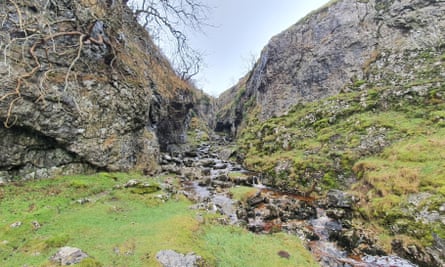
I grew up on the banks of the Wharfe and developed something of a fascination with the river, first walking its length over a long bank holiday weekend 10 years ago. But a chance discovery of an Edwardian travelogue, Two Thousand Miles in Wharfedale, that followed the same route had reignited my obsession and I’d taken to the riverbank once more, retracing the footsteps of the writer Edmund Bogg.
From Ilkley, I picked up the Dales Way, a long-distance footpath that threads its way up through Yorkshire then on to the Lake District. The path led me to beautiful Bolton Abbey estate, one of the most picturesque sections of the Wharfe. The river’s position here, in a small, steep-sided valley, meant the land was never cleared for farming; instead it has one of the largest expanses of old-growth oak woodland in the Dales, rich in biodiversity. The sun was beating down, filtering through the peat-stained water and reflecting off the pale pebble riverbed giving the river a dazzling copper glow that perfectly offset the greens of the trees.
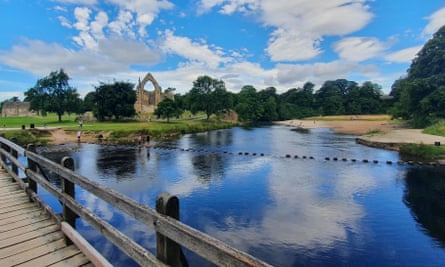
Before long I reached the stretch known as the Strid, as notorious as it is beautiful. Here, the sluggish Wharfe narrows from a meandering 30 metres (98ft) wide to a torrent through a chasm in the rocks a little over two metres across. The name is said by some to come from the gap appearing to be a single stride but it’s more probably comes from a Norse word, strith, analogous to the modern English “strife”.
This is because underneath the usual waterline the river twists and rushes through a collection of undercut caves and hollows with incredible force. The entire volume of the mighty Wharfe thunders through this extremely narrow, deep channel, where traps any unfortunate soul who falls in. It’s reported that every person who has slipped into the Strid has drowned. The Lost Boy of Egremont, a young nobleman, was “strangled by [the] merciless force” of the waters, almost 1,000 years ago, his death recalled by William Wordsworth in his poem The Force of Prayer.
Back on the rainy road to Appletreewick I was approaching the village but something didn’t seem quite right. The place was deserted and pitch black. I padded down the middle of the main street, growing increasingly worried. Surely even if the village was mostly holiday homes there would still be some residents, with scraps of light escaping around their tightly shut curtains?
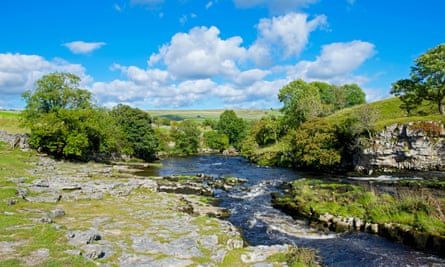
A whitewashed building loomed out of the night – the pub I had been aiming for. But it, too, was closed up tight, showing no signs of life – or light. Distraught, with my dreams of a hot meal and a pint dashed, I looked around in despair and happened to notice the pub’s sign in the dim light: The New Inn.
Did that imply that the village also had an old inn? I checked the map and saw a trusty beer symbol a little further down the road, so pressed on. The village buildings petered out but soon another structure came into view. It also looked deserted until I spotted a dim glow from the windows.
The door swung open at my touch to reveal villagers sitting in candlelight, with antique firearms and gruesome-looking farm equipment hanging off the walls. They fell silent and turned to face me as one, a weird stranger from the gloom, sporting a huge backpack and dripping rain on to the flagstones.
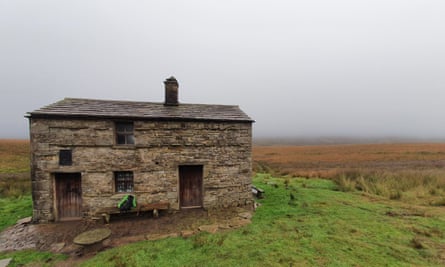
The penny dropped when the landlady informed me that a power cut had struck the village but I was welcome to stay for a few pints of hand-pulled ale.
“Here y’are, put yer bag in front of the fire there!” someone said.
after newsletter promotion
“Oh don’t worry, it’ll be all right – it’s waterproof.”
Quick as a flash, the man replied with a grin, “No, not to dry it off. I just mean because I want to nick it!”
Perhaps that humour was evident when Edmund Bogg walked the route, but there had been many changes since, of course. The RAF base where I’d completed my flying training as a young man was all open fields in Bogg’s day, though the Wright Brothers had made their maiden flight in December 1903, just a month before Bogg’s book was published.
What surprised me most, though, was how much had stayed the same, or at least resonated with modern times. An 1826 riot by the Luddites – suffering from a cost of living crisis after the Napoleonic wars, and losing their livelihoods to new weaving machines – echoed modern concerns about inflation and AI-powered redundancies and inflation.
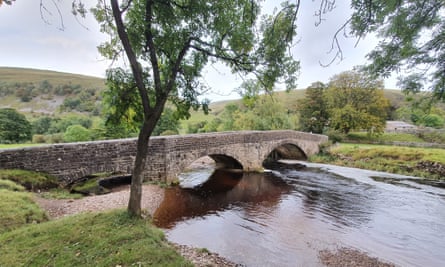
Elsewhere, on a more lighthearted note, the residents of nearby Burnsall had their maypole stolen by shoemaker neighbours from the hamlet of Thorpe. The outraged Burnsalians formed a small mob, marched over the fields to retrieve the pole and, in Bogg’s words, “thrashed the cobblers”. The crime was repeated almost 200 years later, although this time it wasn’t noted whether the thrashing was repeated.
In the pub, I had been welcomed by high-spirited regulars, but I eventually had to leave it to wild-camp in the storm. Thankfully, my tent survived the night next to the raging river, despite some sleepy fears that rising waters would sweep me away.
In the morning I shivered as I pulled my wet trousers back on, but after striking camp and exiting the woods I found the sun racing up over the moors, already drying my wet clothes and promising a cracker of a day. I strode up Wharfedale – now only two days from the river’s source – feeling blessed that adventure could be found on my doorstep, rather than half a world away.











